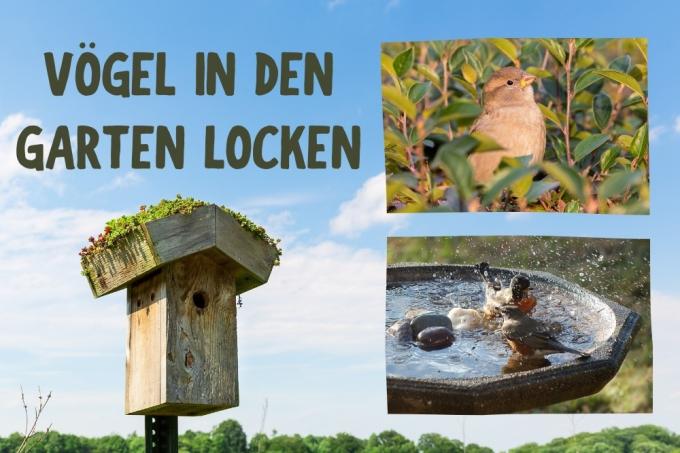
table of contents
- Birds lure with plants
- Popular bird trees
- Popular hedges
- Create nesting opportunities and places of retreat
- Bathing and drinking opportunities for birds
- Recommended: untidy corners
- Unused buildings and walls
Birds are popular visitors to the garden. They delight with their singing and are a good protection against numerous pests. 5 ideas help attract the animals.
Birds lure with plants
Native bird species can only be attracted if you make your garden bird-friendly. This is particularly effective and easy with trees and bushes. Trees are one of the most important ways to attract birds to your garden. They offer the birds shelter, food, a quiet place to breed and raise their offspring. In addition, you can keep numerous species in the bucket and thus make even smaller properties an attractive place for the animals. Hawthorn (Crataegus monogyna) and mountain ash (Sorbus aucuparia) are particularly popular with birds. Both species have proven to be true bird magnets, as they eat the berries and especially in the hawthorn they eat the insects that are attracted by the scent of flowers.
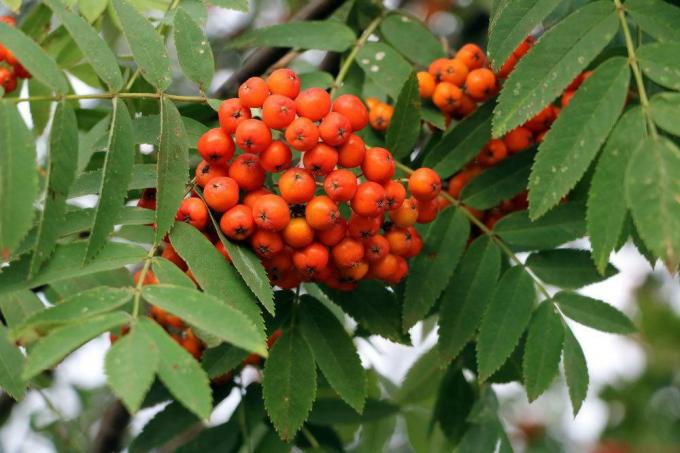
Popular bird trees
- Blackberries (Rubus fruticosus)
- Common whitebeam (Sorbus aria)
- European holly (Ilex aquifolium)
- Field maple (Acer campestre)
- Common rock pear (Amelanchier ovalis)
- Ordinary Pimpernut (Staphylea pinnata)
- Blueberry (Vaccinium myrtillus)
- raspberry (Rubus idaeus)
- Crab apple (Malus silvestris)
- Dog rose (Rosa canina)
- Currants (Ribes)
- Potato Rose (Rosa rugosa)
- Cornelian cherry (Cornus mas)

- Buckthorn (Rhamnus cartharticus)
- Euonymus europaeus
- Red honeysuckle (Lonicera xylosteum)
- Sea buckthorn (Hippophae rhamnoides)
- Sea buckthorn (Berberis vulgaris)
- Sloe (Prunus spinosa)
- Black elder (Sambucus nigra)
- Service tree (Sorbus domestica)
- Stone sissy (Prunus mahaleb)
- Red vetch (Coronilla emerus)
- Grape elder (Sambucus racemosa)
- Bird cherry (Prunus padus)
- Juniper (Juniperus communis)
- Woolly snowball (Viburnum lantana)
- Bird cherry (Prunus avium)
As you can see, there are numerous plants that you can use to make your garden bird-friendly. Since they are of different sizes and widths, they really fit into any garden. When choosing a specimen, make sure that there are already well-branched branches. This way you can attract birds to your garden immediately after planting. In combination with the woods, it is worth planting wild flowers and herbs such as nettles (Urtica dioica) or meadow daisies (Chrysanthemum leucanthemum).

Popular hedges
- Yew trees (Taxus baccata)
- Hornbeam (Carpinus betulus)
- liguster (Ligustrum vulgare)
- Common beech (Fagus sylvatica)
A popular representative is the hazelnut (Corylus avellana), which will attract even larger birds to your garden. No wonder, the nuts are a delicacy for the animals. Hedges have the advantage that, because of their size, they can be used by numerous birds. At the same time, humans do not spend too often on hedges, which gives the animals a lot of peace and quiet. You can even see climbing plants like the self-climbing maiden vine (Parthenocissus tricuspidata), knotweed (Persicaria), the Clematis (Clematis vitalba) and of course the ivy (bot. Hedera helix) as a hedge or privacy screen. Birds like to stay in these as well. If you then cultivate bird-friendly plants, you can look forward to many visitors.
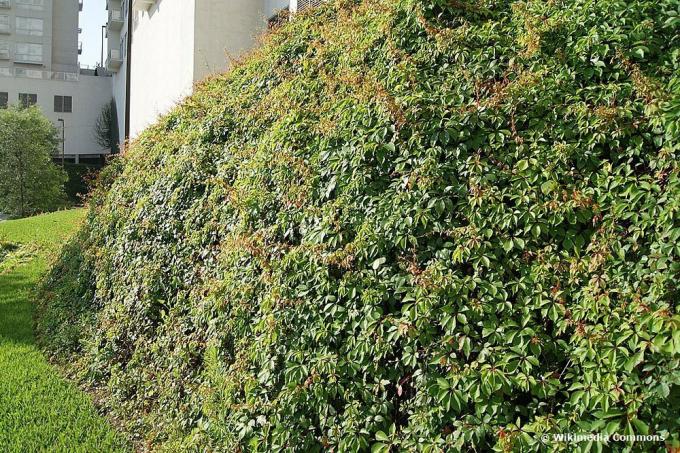
Note: If there are old trees in your garden that have caves or where deadwood can be identified, you should definitely leave them standing. Older trees offer numerous shelters for a wide variety of bird species.
Create nesting opportunities and places of retreat
Plants aren't the only way you can give birds a haven. One of the most classic variants is the use of bird houses or Nest boxesthat are ideal for attracting animals. They ensure that the animals feel safe, have a place of refuge over the winter and can raise their brood without any problems. Even a bird house is enough to attract birds to your garden. However, there are a few points you should keep in mind:
- Use nesting facilities made from untreated wood
- Orientation: east
- must face away from the weather
- inaccessible to predators
- Protect from strong sunlight
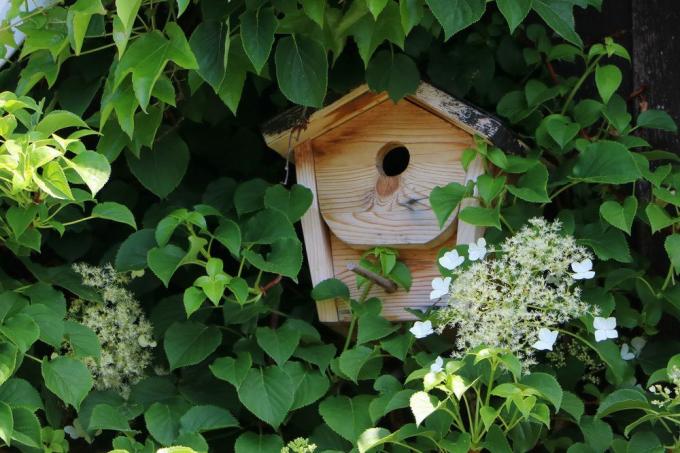
These points apply to bird houses and nesting boxes. In addition, you have to make sure that the individual species need different sizes at the entry holes. This way you can attract special species. Optionally, you can hang up a bird feeder to offer the animals food. This also increases the frequency with which birds will find their way into your garden.
Bathing and drinking opportunities for birds
In addition to the use of suitable plants and the provision of various nesting options, you should offer the birds a watering facility. In this the animals can also wash themselves, which supports the care of the plumage. We recommend drinking troughs if the following initial situations exist:
- hot or dry climate
- little to no shade in the garden
- no garden pond

In such cases it is difficult for the animals to cool down, especially if you live in urban areas without enough greenery. Drinking waterers are also a way of helping birds out without a shelter. Even a bowl filled with water is sufficient if you only have a balcony. For these, choose a heavy material that cannot be knocked over easily. Not only blue tits or robins can be found at a drinking trough. Crows, magpies and other larger species do not miss this opportunity. Regardless of whether you choose a trough with a stand or a bowl, the right location is important:
- Shadows over midday
- Escape locations easily accessible
- Free space around the drinker: min. 3 m
- preferably increased
The trough should never be placed next to a hedge, bush or other hiding place for cats. For this reason, the free space around the water source is important for the birds so that the velvet paws cannot sneak up on the drinking and bathing feathered animals. When choosing the potions, make sure they have a flat edge. This makes it easier to lure the animals to the water as they cannot fall into it.
Note: In addition to the bathing facilities, you can also set up a bowl of bird sand in a sheltered place. Sparrows in particular enjoy a sand bath and will literally besiege the shell.
Recommended: untidy corners
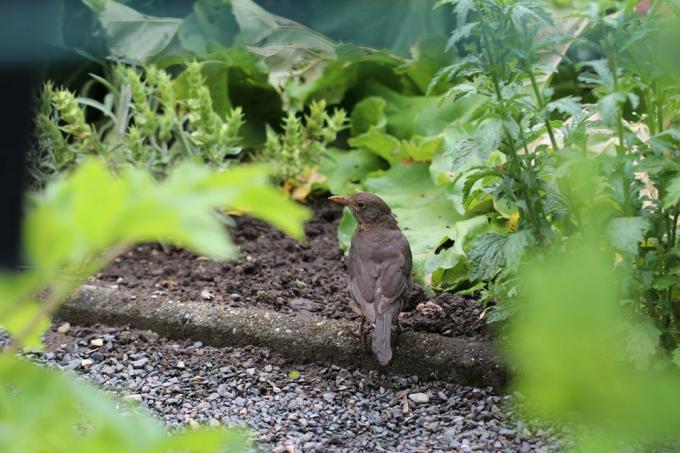
Untidy corners are possible in almost every garden and even on properties without lawns. Birds get these quite often because they offer enough security and tranquility. The big advantage of this method: You can easily create it yourself. Since plant-based materials are used, most of the materials you need can be found either in your own garden, nearby woods or from friends. Are suitable:
- Lawn clippings
- leaves
- Pieces of wood
- Branches and shoots
- Plant debris such as weeds
For example, if you have your race after a long period of time have cut, simply rake the clippings in a corner of your garden that is not used frequently. Depending on the size of the heap, you can, for example, layer a few branches over it and add some more leaves. The composition is based on the available materials and partly according to your taste. Decorative corners can be set up with branches and shoots, which attract birds as a nesting place and with food. Untidy corners are popular not only because of the hiding places. They are home to numerous insects that are hunted by the birds. The dunnock (Prunella modularis) is often found in these collections.
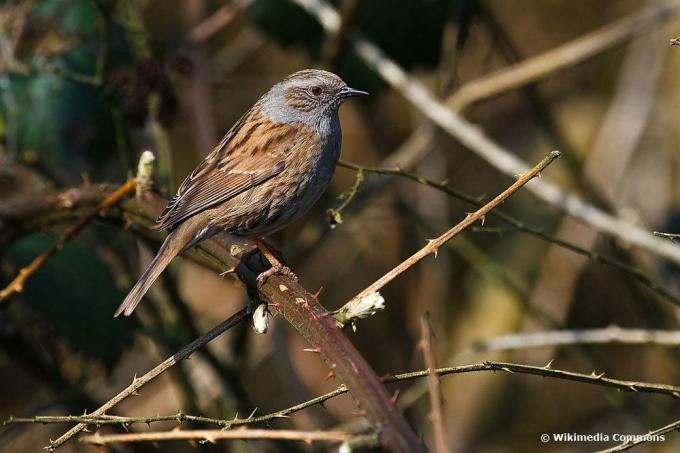
Tip: Simply leave your flower or perennial beds in the garden for the winter and do not cut them back in autumn, but only between February and March. In this way, many seed pods are preserved over the cold season, which provides birds with another source of food.
Unused buildings and walls
Structures on your property that are not or only rarely used by you are also ideal for attracting the animals. These include:
- Dry stone walls (not jointed)
- Garden houses
- Tool shed
- Pavilions
A large part of the bird species is not large and the structures listed are excellent as Use a hiding place or nesting place if you are not installing a bird feeder or adding new plants can. Quiet is a prerequisite for use. When the birds feel disturbed, they rarely stay in the structures. Otherwise you don't have to do anything to make the structures attractive to the birds. In most cases you will visit them yourself, as long as you do not visit them too often. This also applies to children and pets. With a little luck you can even look forward to a wren (Troglodytes troglodytes) or nuthatch (Sitta europaea).


